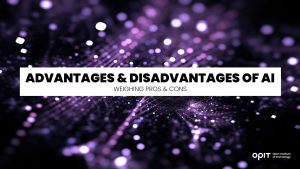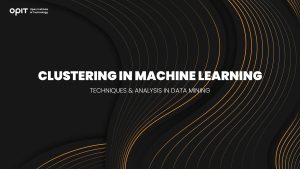AI investment has become a must in the business world, and companies from all over the globe are embracing this trend. Nearly 90% of organizations plan to put more money into AI by 2025.
One of the main areas of investment is deep learning. The World Economic Forum approves of this initiative, as the cutting-edge technology can boost productivity, optimize cybersecurity, and enhance decision-making.
Knowing that deep learning is making waves is great, but it doesn’t mean much if you don’t understand the basics. Read on for deep learning applications and the most common examples.
Artificial Neural Networks
Once you scratch the surface of deep learning, you’ll see that it’s underpinned by artificial neural networks. That’s why many people refer to deep learning as deep neural networking and deep neural learning.
There are different types of artificial neural networks.
Perceptron
Perceptrons are the most basic form of neural networks. These artificial neurons were originally used for calculating business intelligence or input data capabilities. Nowadays, it’s a linear algorithm that supervises the learning of binary classifiers.
Convolutional Neural Networks
Convolutional neural network machine learning is another common type of deep learning network. It combines input data with learned features before allowing this architecture to analyze images or other 2D data.
The most significant benefit of convolutional neural networks is that they automate feature extraction. As a result, you don’t have to recognize features on your own when classifying pictures or other visuals – the networks extract them directly from the source.
Recurrent Neural Networks
Recurrent neural networks use time series or sequential information. You can find them in many areas, such as natural language processing, image captioning, and language translation. Google Translate, Siri, and many other applications have adopted this technology.
Generative Adversarial Networks
Generative adversarial networks are architecture with two sub-types. The generator model produces new examples, whereas the discriminated model determines if the examples generated are real or fake.
These networks work like so-called game theory scenarios, where generator networks come face-to-face with their adversaries. They generate examples directly, while the adversary (discriminator) tries to tell the difference between these examples and those obtained from training information.
Deep Learning Applications
Deep learning helps take a multitude of technologies to a whole new level.
Computer Vision
The feature that allows computers to obtain useful data from videos and pictures is known as computer vision. An already sophisticated process, deep learning can enhance the technology further.
For instance, you can utilize deep learning to enable machines to understand visuals like humans. They can be trained to automatically filter adult content to make it child-friendly. Likewise, deep learning can enable computers to recognize critical image information, such as logos and food brands.
Natural Language Processing
Artificial intelligence deep learning algorithms spearhead the development and optimization of natural language processing. They automate various processes and platforms, including virtual agents, the analysis of business documents, key phrase indexing, and article summarization.
Speech Recognition
Human speech differs greatly in language, accent, tone, and other key characteristics. This doesn’t stop deep learning from polishing speech recognition software. For instance, Siri is a deep learning-based virtual assistant that can automatically make and recognize calls. Other deep learning programs can transcribe meeting recordings and translate movies to reach wider audiences.
Robotics
Robots are invented to simplify certain tasks (i.e., reduce human input). Deep learning models are perfect for this purpose, as they help manufacturers build advanced robots that replicate human activity. These machines receive timely updates to plan their movements and overcome any obstacles on their way. That’s why they’re common in warehouses, healthcare centers, and manufacturing facilities.
Some of the most famous deep learning-enabled robots are those produced by Boston Dynamics. For example, their robot Atlas is highly agile due to its deep learning architecture. It can move seamlessly and perform dynamic interactions that are common in people.
Autonomous Driving
Self-driving cars are all the rage these days. The autonomous driving industry is expected to generate over $300 billion in revenue by 2035, and most of the credits will go to deep learning.
The producers of these vehicles use deep learning to train cars to respond to real-life traffic scenarios and improve safety. They incorporate different technologies that allow cars to calculate the distance to the nearest objects and navigate crowded streets. The vehicles come with ultra-sensitive cameras and sensors, all of which are powered by deep learning.
Passengers aren’t the only group who will benefit from deep learning-supported self-driving cars. The technology is expected to revolutionize emergency and food delivery services as well.
Check out OPIT degrees
-
Career aligned
-
Fully Online
-
EU-accredited institution
Deep Learning Algorithms
Numerous deep learning algorithms power the above technologies. Here are the four most common examples.
Backpropagation
Backpropagation is commonly used in neural network training. It starts from so-called “forward propagation,” analyzing its error rate. It feeds the error backward through various network layers, allowing you to optimize the weights (parameters that transform input data within hidden layers).
Stochastic Gradient Descent
The primary purpose of the stochastic gradient descent algorithm is to locate the parameters that allow other machine learning algorithms to operate at their peak efficiency. It’s generally combined with other algorithms, such as backpropagation, to enhance neural network training.
Reinforcement Learning
The reinforcement learning algorithm is trained to resolve multi-layer problems. It experiments with different solutions until it finds the right one. This method draws its decisions from real-life situations.
The reason it’s called reinforcement learning is that it operates on a reward/penalty basis. It aims to maximize rewards to reinforce further training.
Transfer Learning
Transfer learning boils down to recycling pre-configured models to solve new issues. The algorithm uses previously obtained knowledge to make generalizations when facing another problem.
For instance, many deep learning experts use transfer learning to train the system to recognize images. A classifier can use this algorithm to identify pictures of trucks if it’s already analyzed car photos.
Deep Learning Tools
Deep learning tools are platforms that enable you to develop software that lets machines mimic human activity by processing information carefully before making a decision. You can choose from a wide range of such tools.
TensorFlow
Developed in CUDA and C++, TensorFlow is a highly advanced deep learning tool. Google launched this open-source solution to facilitate various deep learning platforms.
Despite being advanced, it can also be used by beginners due to its relatively straightforward interface. It’s perfect for creating cloud, desktop, and mobile machine learning models.
Keras
The Keras API is a Python-based tool with several features for solving machine learning issues. It works with TensorFlow, Thenao, and other tools to optimize your deep learning environment and create robust models.
In most cases, prototyping with Keras is fast and scalable. The API is compatible with convolutional and recurrent networks.
PyTorch
PyTorch is another Python-based tool. It’s also a machine learning library and scripting language that allows you to create neural networks through sophisticated algorithms. You can use the tool on virtually any cloud software, and it delivers distributed training to speed up peer-to-peer updates.
Caffe
Caffe’s framework was launched by Berkeley as an open-source platform. It features an expressive design, which is perfect for propagating cutting-edge applications. Startups, academic institutions, and industries are just some environments where this tool is common.
Theano
Python makes yet another appearance in deep learning tools. Here, it powers Theano, enabling the tool to assess complex mathematical tasks. The software can solve issues that require tremendous computing power and vast quantities of information.
Check out OPIT degrees
-
Career aligned
-
Fully Online
-
EU-accredited institution
Deep Learning Examples
Deep learning is the go-to solution for creating and maintaining the following technologies.
Image Recognition
Image recognition programs are systems that can recognize specific items, people, or activities in digital photos. Deep learning is the method that enables this functionality. The most well-known example of the use of deep learning for image recognition is in healthcare settings. Radiologists and other professionals can rely on it to analyze and evaluate large numbers of images faster.
Text Generation
There are several subtypes of natural language processing, including text generation. Underpinned by deep learning, it leverages AI to produce different text forms. Examples include machine translations and automatic summarizations.
Self-Driving Cars
As previously mentioned, deep learning is largely responsible for the development of self-driving cars. AutoX might be the most renowned manufacturer of these vehicles.
The Future Lies in Deep Learning
Many up-and-coming technologies will be based on deep learning AI. It’s no surprise, therefore, that nearly 50% of enterprises already use deep learning as the driving force of their products and services. If you want to expand your knowledge about this topic, consider taking a deep learning course. You’ll improve your employment opportunities and further demystify the concept.




